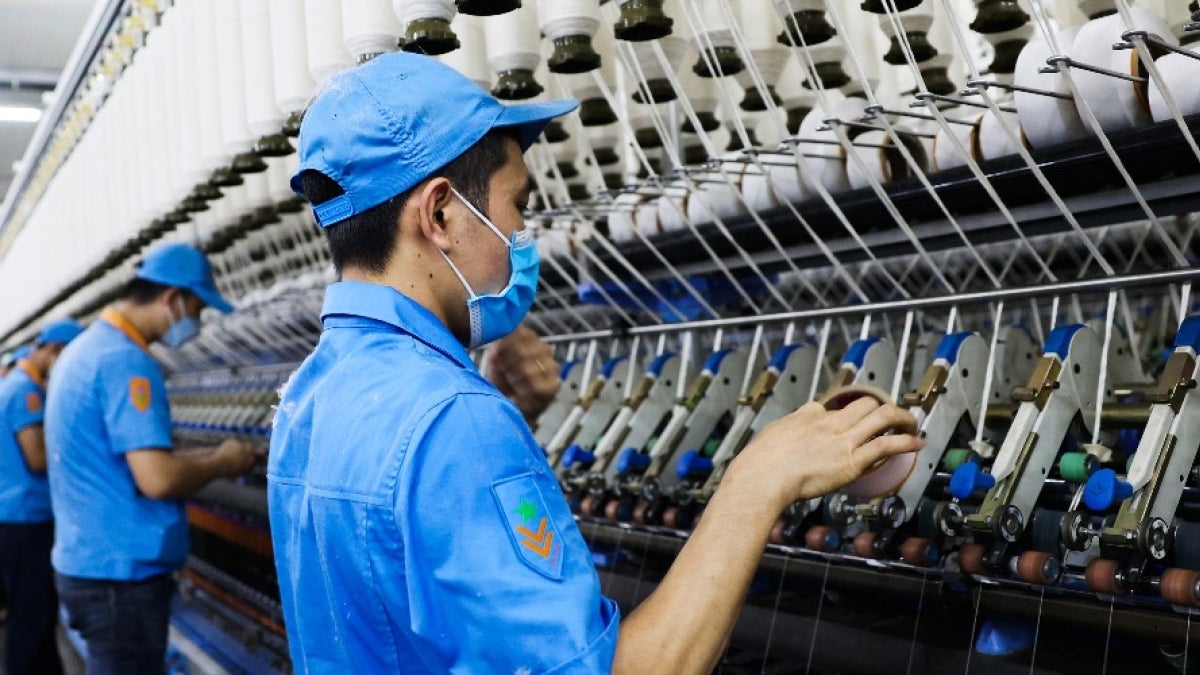Productiveness is the important thing driver of financial progress, accounting for greater than half the variations throughout international locations in GDP per capita.
There are long-standing debates, nevertheless, on the impact of productiveness progress on jobs. Larger productiveness permits companies to increase manufacturing, employment, and wages – nevertheless it additionally reduces the variety of employees wanted to supply a given quantity of output, probably reducing the demand for employees. New applied sciences additional disrupt how productivity-enhancing investments translate into jobs.
Therefore, the hyperlink between firm-level productiveness progress and jobs is formed by two reverse results:
- A damaging direct labor-saving impact as a result of a extra environment friendly agency might produce the identical quantity of output with much less labor
- A constructive oblique impact from the enlargement of output or emergence of recent duties
The oblique impact of productivity-enhancing applied sciences can emerge by new duties for which labor has a comparative benefit, equivalent to the necessity for machine upkeep or software program growth. As well as, productiveness progress can improve the demand for items and providers, elevating the demand for employees. Corporations with greater productiveness can increase and decrease costs, growing their gross sales and labor demand. On the mixture stage, linkages and mixture demand have additionally performed an essential function. Such results could also be as a consequence of direct intersectoral linkages, whereby productiveness progress in supplying industries can stimulate labor demand additional down the worth chain and vice-versa. Equally, productiveness progress that will increase wages or jobs in a single sector might not directly elevate client demand for merchandise in different sectors.
Whereas the literature finds that the web firm-level employment results have been constructive, impacts fluctuate throughout totally different teams of employees. On the business and nation stage, productiveness progress additionally appears, on stability, to have elevated employment. Nonetheless, whereas total job results throughout industries are constructive, results on jobs inside an business should be damaging.
Coverage ought to guarantee sturdy competitors, which seems to positively affect productiveness progress’s impact on jobs, probably by guaranteeing that greater productiveness results in extra gross sales. Additional, policymakers can encourage the constructive results of productiveness progress by decreasing obstacles to labor reallocation and supporting know-how diffusion for companies.
Lastly, the job results of recent applied sciences additionally rely on the stability between labor displacement and “reinstatement” by new complementary duties. Recognizing this problem, current proposals for “pro-worker” AI embrace tax reform, stronger governmental AI experience, and elevated funding for human complementary know-how analysis. Additional analysis is required to grasp how insurance policies can maximize the job creation potential of productiveness progress and reduce trade-offs.
The hyperlink between productiveness progress and jobs
- The present development of generative AI on the way forward for work favors automation, labor displacement, and elevated employee surveillance. An alternate “human-complementary” approach might promote productiveness and cut back inequality. (Acemoglu et al., MIT Shaping the Way forward for Work Initiative, September 2023)
- In India, an increase in tradable services employment positively affects non-tradable services employment and the number of non-tradable service firms. (Avdiu et al., World Financial institution, July 2022)
- This examine finds a positive correlation between productivity growth and employment and wage growth, suggesting insurance policies might help convert technological and organizational modifications into greater employment and wage progress. (OECD, Science, Know-how, and Trade Coverage Papers, August 2023)
- A survey of current literature on the direct and indirect impacts of automation on employment finds assist for constructive direct impact of automation on employment as a consequence of elevated productiveness and demand. (Aghion et al., Working Paper, Forthcoming)
Important readings
- A novel database spanning eight many years of recent US job titles means that demand-eroding effects of automation innovations have intensified within the final 4 many years. (Autor et al., Nationwide Bureau of Financial Analysis, August 2022)
- Information from 28 industries throughout 18 OECD international locations counsel that automation has not caused job losses but has reduced labor’s share in the value of output. (Autor & Salomons, BPEA Convention Drafts, March 2018)
- There is a chance to foster AI that generates new opportunities for human employment and better economic and social outcomes. (Acemoglu & Restrepo, Cambridge Journal of Areas, Financial system and Society, March 2020)
- Automation is responsible for approximately 50 to 70 percent of changes in the US wage structure over the last four decades, leading to diminished wages for employees specializing in routine duties. (Acemoglu & Restrepo, Econometrica, September 2022)
- Information from Germany present robot exposure in manufacturing leads to job displacement effects, however these are compensated for by new job alternatives within the providers sector. (Dauth et. al, Journal of the European Financial Affiliation, Could 2021)
- This examine explores the relationship between technical change and employment. (Calvino & Virgillito, Laboratory of Economics and Administration Papers Collection, October 2016)
Broader jobs agenda
- While technology can displace labor, compensating mechanisms often generate or restore employment. (Hotte et. al, Technological Forecasting and Social Change, September 2023)
- A pure subject experiment at a big know-how agency demonstrates that simple adjustments to the salary review process can prevent gender gaps from widening in employees’ careers. (Alfitian et. al, IZA Institute of Labor Economics, June 2023)
- This examine from Italy examines the impact of labor market regulation changes on skill demand by firms. (Bottasso et al., IZA Institute of Labor Economics, June 2023)
This weblog relies on the October 2023 version of the Knowledge4Jobs e-newsletter, curated by the World Financial institution’s Jobs Group and Labor and Abilities World Options Group. Click on here to join the Knowledge4Jobs e-newsletter.
To obtain weekly articles, sign-up right here

